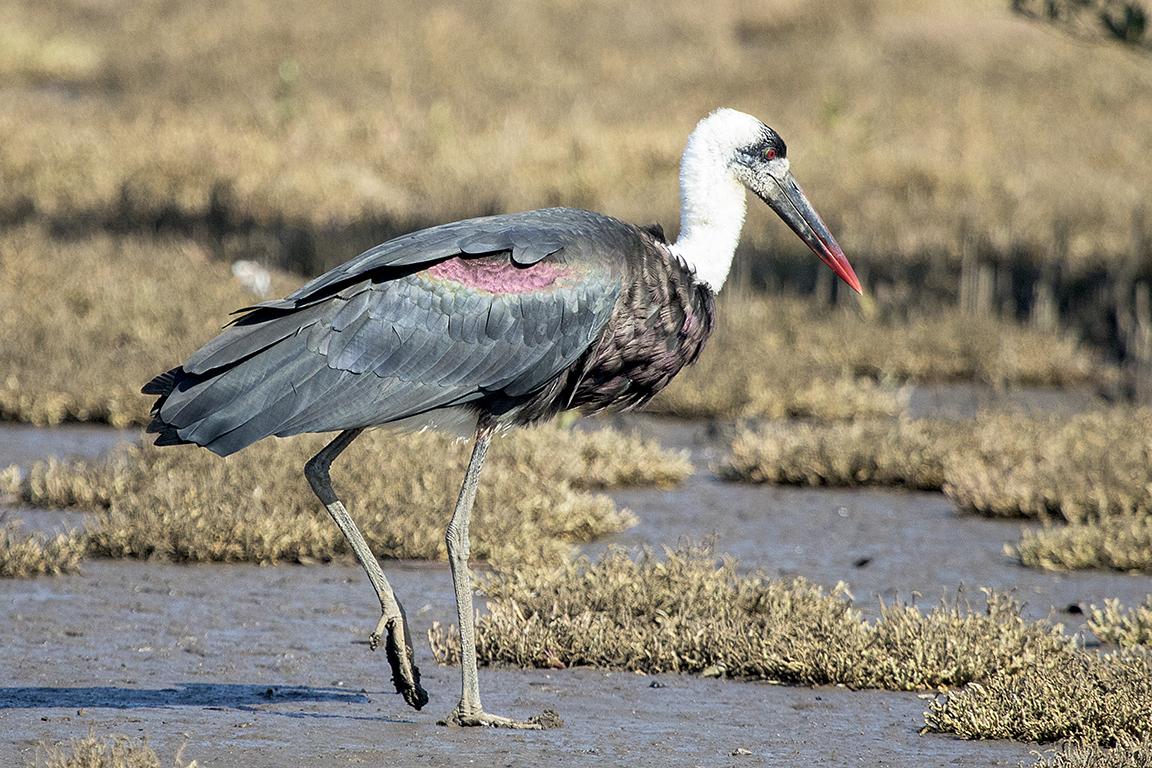Woolly-necked Stork

St Lucia Wetlands, Kwa-zulu Natal, South Africa
The woolly-necked stork has a very wide range which encompasses tropical regions from Asian to India and much of Sub-Saharan Africa. it has also successfully adapted to a wide variety of habitats including forest marshes, wetlands ,flood plains, rivers, lakes, ponds, lagoons mangrove swamps, estuaries, tidal mudflats and various man made environments such as golf courses, parks and agricultural land.
Feeding
The woolly-necked stork has a diet that is mainly carniverous and includes marine invertebrates, molluscs, crabs, large insects, amphibians, fish and reptiles. It forages by walking slowly in water or through vegetation stabbing prey.
Breeding
The woolly-necked stork is monogamous and generally a solitary nester although occasionally nests in small colonies of four or five pairs. The nest is the usual stork platform of sticks with a bowl lined with grass, leaves and small twigs and postioned in the fork of a tree ten to fifty metres from the ground or above the water, or even on a cliff or man made structure. Both parents incubate two to four eggs and also raise the chicks.
Wildfile Specials
- In Sulawesi people have seen woolly-necked storks eating sea snakes,
- In Kwa-zulu Natal, South Africa, woolly-necked storks have adapted to people feeding them and nest in local, exotic tree species in the suburbs. The death of two nestlings is believed to be due to processed foods provided by well meaning members of the public.
- Woolly-necked storks are drawn to fires in grassland and crop fields where they feed on prey escaping the flames.
- The construction of irrigation canals in the Thar Desert of Rajasthan is enabling woolly-necked storks to extend their range in India.
- In China woolly-necked storks are found at an altitude of 3790 metres and in Nepal, at 3540 metres.
- A severe decline in the numbers of woolly-necked storks on the Mekong River in Cambodia, perhaps through hunting, suggests the species is threatened in South East Asia despite its wide distribution and success elsewhere.